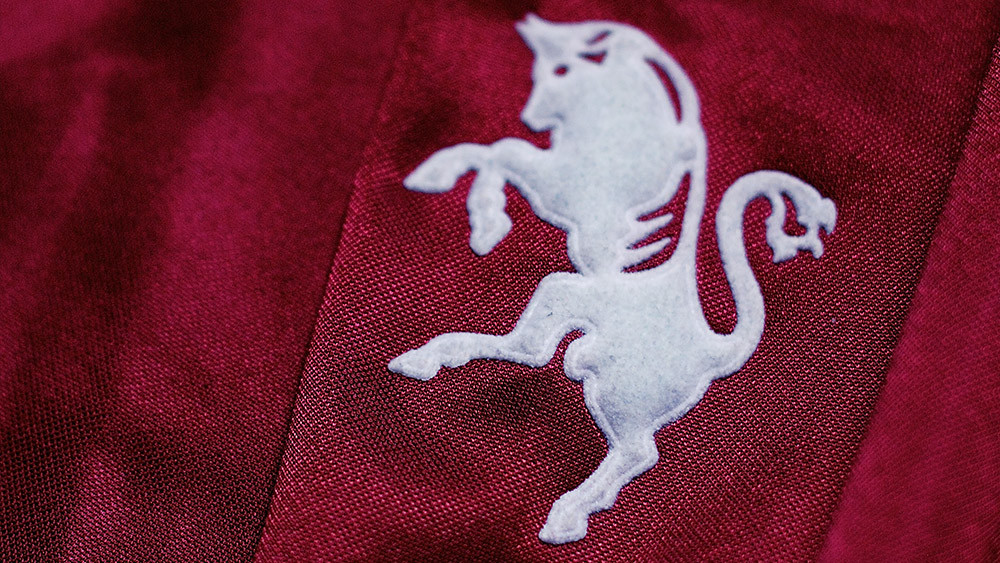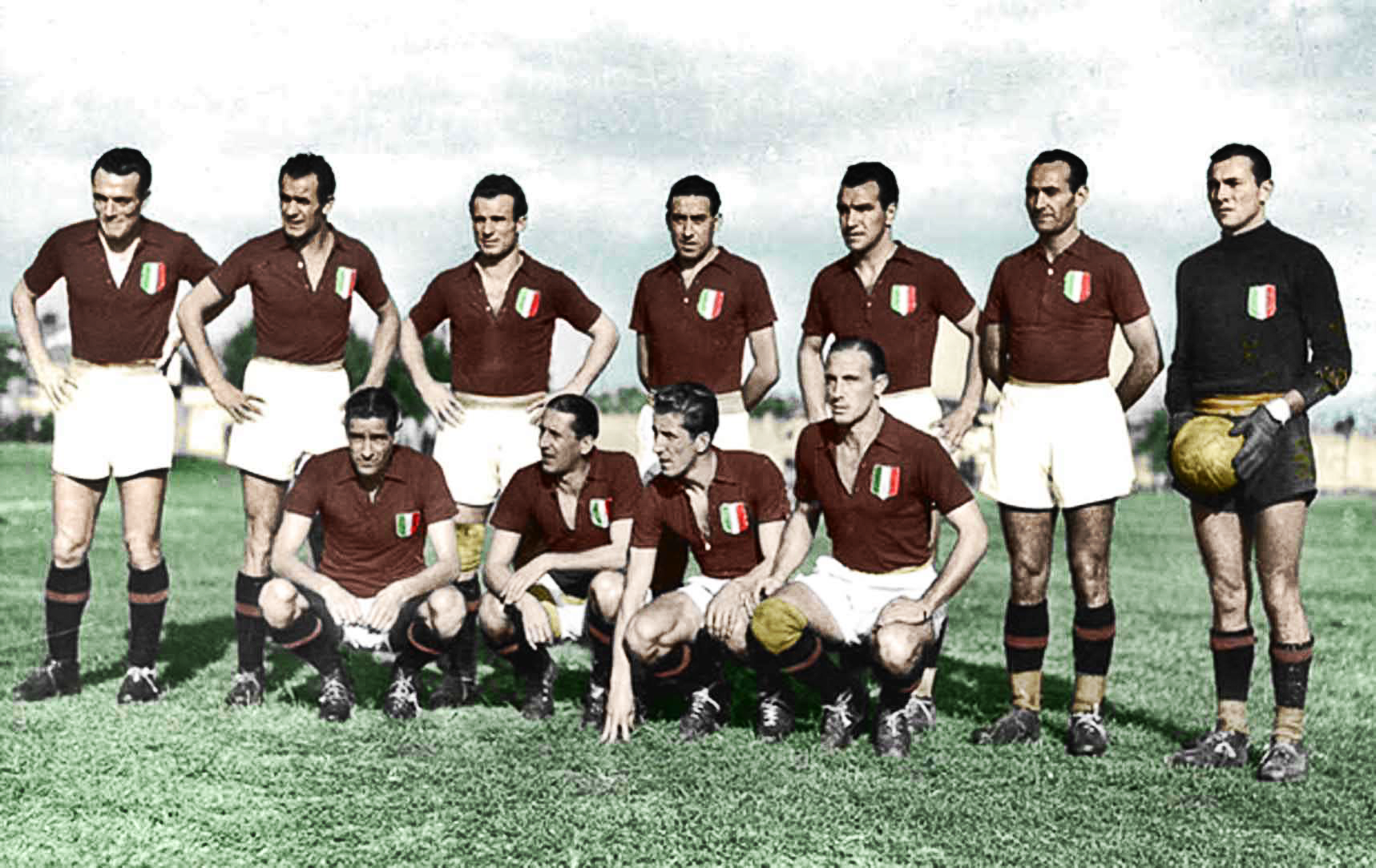
Founded in 1906, Torino Football Club are perhaps the most tragic team in the history of football. Many who have heard of Torino know them solely for the Superga disaster, but in truth, their story goes far deeper than simply one plane crash.
Unlike Manchester United, who managed to recover and rebuild following the Munich Air Disaster and amazingly won the European Cup some ten years later with a team featuring Best, Law and Charlton, Torino never really seem to have moved on from Superga, and instead live in memory of that fateful day in 1949 and the famous side known as Il Grande Torino, a team that was loved by the whole of Italy – and made up the majority of the Italian national team.
To show the impact that Superga had, over half a million people attended the funerals of those who died in the crash. Automotive giant Fiat even halted production for a minute’s silence (with many workers being Torino fans), and shops closed all over Turin. The Superga tragedy united Italy in mourning and grief. That grief has always remained with Toro.
Even if Torino had managed to move on from the memory of Superga, it would still undoubtedly have been hit hard by the tragic death of its star player Gigi Meroni in 1967. A talented, long haired flamboyant playboy winger for the Granata (notice any parallels?), Meroni was the best player in a Torino side who had started to climb their way back up towards the top of Serie A, and challenge Inter, AC Milan and Juventus for the scudetto.
Read | Valentino Mazzola: the legendary leader of Il Grande Torino
Meroni was known as an artist on the field, a player who was allowed the freedom to express himself by the then-Torino manager, and arguably the father of Catenaccio, Nereo Rocco. Of course, as is typical with the Torino story, this wasn’t to be, and Meroni was killed when he was hit by a car whilst crossing the road following a game against Sampdoria. Ironically, and again fittingly for Torino, the man who hit Meroni – a lifelong Torino fan by the name of Attilio Romero – later went on to become club president in 2000, a period of dark times for Torino, where they suffered financial difficulty, and effectively became a yo-yo team between Serie A and Serie B.
Torino’s lowest moment came in 2005, when the club was officially declared bankrupt, and re-admitted to Serie B under a new name, Torino Football Club. At this point, nostalgia was all that fans of the Granata had left. To highlight the shadow that Torino’s history casts over the club, since Superga, Torino have only won the scudetto once, in 1976. Even then, the Toro fans associated the success with pain, with 400 of them gathering in Corsa Re Umberto, the road where Meroni had died in 1967.
Generally, this is the history of Torino that is told to football fans around the world. Sadly, it’s a fair reflection, and it focuses heavily on the tragedies surrounding the club, something that is actually of morbid, romantic appeal, and has made football lovers tune in as fans of Torino. Football fans are attracted to the romantic tragedy of Torino, and long for the days when the once great club with the maroon shirts will rise up again to rival Juventus, and perhaps even move back into their fabled and long derelict stadium, the Filadelfia.
Fast forward to 2016 and the future is finally looking bright for Torino. The club has now been back in Serie A for four consecutive seasons, and has achieved an element of stability under the excellent management of first Gian Piero Ventura – who was in charge from 2011 to 2016, the longest spell a Torino manager has had in years, and is now the Italy manager – and now Siniša Mihajlović. Ventura was a skilled tactician, and switched from a 4-2-4 system (an attacking 4-4-2 in reality) to a classic Italian 3-5-2 over the years.
Those of you who watched the Europa League last season will have hopefully seen the exploits of the second Turin side, who made it through to the round of 16, facing eventual quarter-finalists Zenit Saint Petersburg, who themselves lost to eventual winners Sevilla. Zenit only just beat Torino 2-1 on aggregate, an unbelievable feat when you consider the abundance of money that Zenit boasts.
Torino has also become increasingly successful in the transfer market, employing an almost moneyball-like transfer policy, aware that it is unable to keep budding stars at the club for too long and selling them on for large profits.
Examples of this are Ciro Immobile, Serie A’s top scorer in 2013-14, and Alessio Cerci, who were sold in 2015 summer to top clubs, Borussia Dortmund and Atlético Madrid, respectively, with Torino making large profits on both. Furthermore, in 2015, the club sold star wing-back Matteo Darmian to Manchester United, for a fee that was reported as £12.7 million. The very fact that clubs like Dortmund, Atlético and Manchester United are targeting Torino players highlights the advances the club has made, and its increased standing in world football.
Read | The tragedy and triumph of Il Grande Torino
As well as becoming financially stable – in stark contrast to a decade ago – the club has also become a well-established team in Serie A, bolstered by promising stars like Andrea Belotti. Following an inevitable relegation struggle in their first season back in following promotion, Torino finished seventh in their second season on the back of the goals and prolific partnership of Immobile and Cerci, granting them participation in the Europa League. Following a summer of changes and brave transfer decisions to sell their two best players, Torino finished 12th in Serie A last season, a respectable placing.
Last summer, Torino started to make moves in the transfer window, notably signing Joe Hart on loan and Adem Ljajić and Iago Falque from Roma; sure fire signs of growth and progress. With a couple more signings, it would not be surprising to see Torino as regulars in the Europa League places. In reality, with a need for a skilled ball-player in the centre of the park, and more energy in midfield, Torino are only steps away from making a telling impact in Serie A.
Most pleasing to the club’s fans, the Granata beat great city rivals Juventus in the Coppa Italia in 2015, their first win against the Old Lady in the Derby Della Mole since the 1994-95 season. To put that result in perspective, the clubs faced each other a total of 17 times in that timespan with Juventus winning 13 of them. To show how far the club has fallen and risen in the past 20 years, the win in the 1994-95 season was only a few years after Torino faced Louis van Gaal’s great Ajax side in the final of the then-UEFA Cup, before Litmanen, Overmars and co. went on to win the Champions League.
These steps are certainly small, but in comparison to the turmoil that has existed at the club in recent decades, indeed since Superga, the stability and financial validity of Torino points towards a brighter future for the club. When you compare the organisation of Torino with many of the other clubs in Italy, it obvious that the Turin natives are increasingly in a position to move further and further up the table, with many clubs in Italy suffering from recent mismanagement, not least both Milan sides.
Perhaps one day, a Derby Della Mole can be held when both sides are competing for the title once again, and the derby can start to rival the Madonnina in terms of international appeal and relevancy. Moreover, perhaps one day soon, Torino can finally move on from Superga and Il Grande Torino, and start to write a history as successful and memorable as the one written by Valentino Mazzola, Ernest Erbstein and Gigi Meroni.
By Jonathon Aspey. Follow @JLAspey


